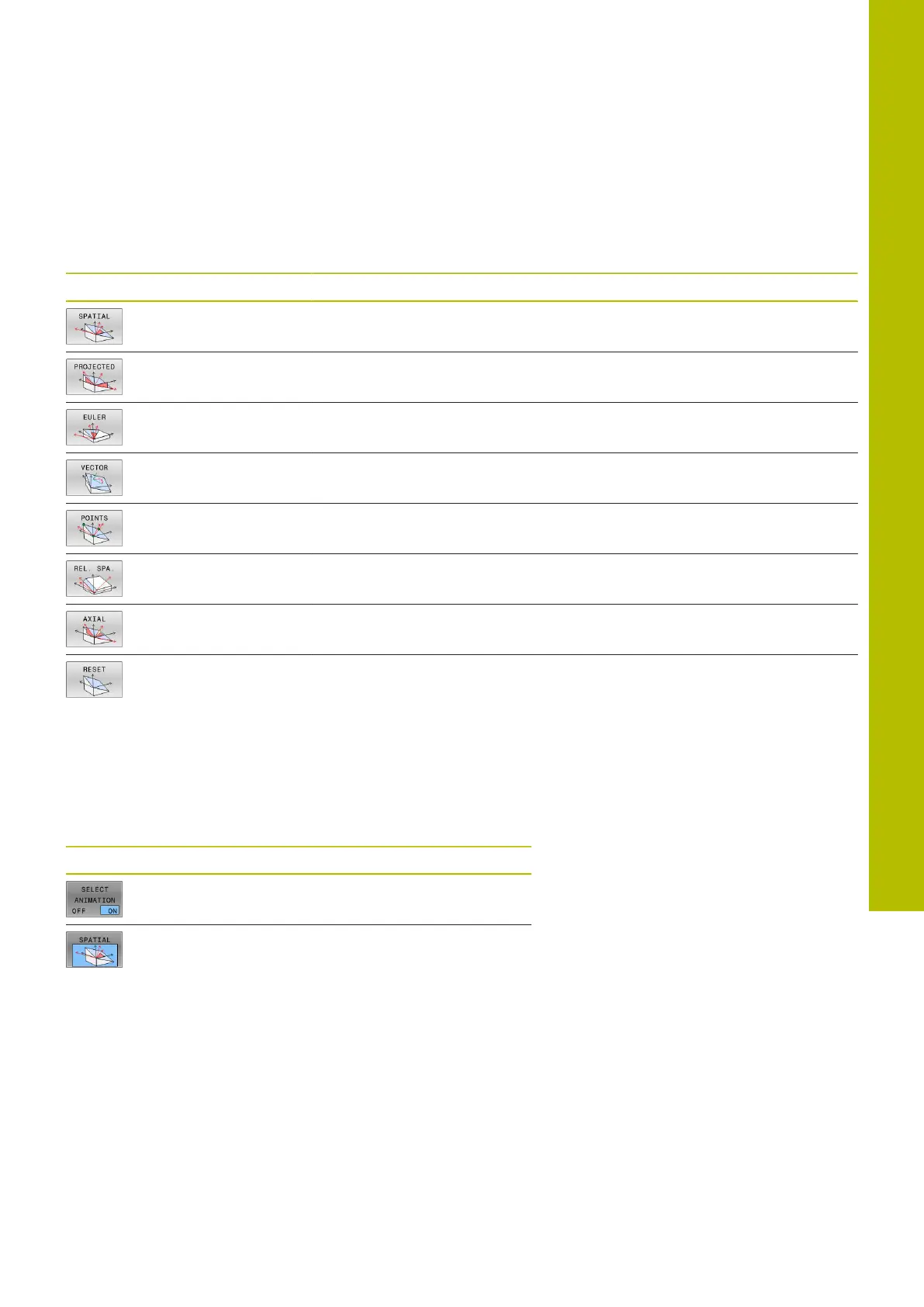Multiple-axis machining | The PLANE function: Tilting the working plane (option 8)
Overview
Most PLANE functions (except PLANE AXIAL) can be used to
describe the desired working plane independently of the rotary axes
available on your machine. The following possibilities are available:
Soft key Function Required parameters Page
SPATIAL Three spatial angles: SPA, SPB, and SPC 436
PROJECTED Two projection angles: PROPR and PROMIN and a rotation
angle ROT
438
EULER Three Euler angles: precession (EULPR), nutation (EULNU)
and rotation (EULROT),
440
VECTOR Normal vector for defining the plane and base vector for
defining the direction of the tilted X axis
442
POINTS Coordinates of any three points in the plane to be tilted 445
RELATIVE Single, incrementally effective spatial angle 447
AXIAL Up to three absolute or incremental axis angles A,B,C 448
RESET Reset the PLANE function 435
Running an animation
To familiarize yourself with the various definition possibilities of each
PLANE function, you can start animated sequences via soft key. To
do so, first enter animation mode and then select the desired PLANE
function. While the animation plays, the control highlights the soft
key of the selected PLANE function with a blue color.
Soft key Function
Switch on the animation mode
Select the desired animation (highlighted in blue)
11
HEIDENHAIN | TNC620 | Klartext Programming User's Manual | 01/2022
433

